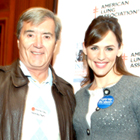 |
The exchange of gases—oxygen and carbon dioxide—between the lungs and the blood is a normal physiological process that delivers oxygen throughout the body. Deterioration of the lungs’ circulatory system (pulmonary circulation) often accompanies normal aging. As people age, pulmonary circulation pressure increases and the surface area of the air sacs and the smallest blood vessels in the lungs (alveolar-capillary membrane) decreases. A reduction in alveolar-capillary membrane surface area can compromise the exchange of oxygen and carbon dioxide from the lungs to the blood.
A research team from the Mayo Clinic in Rochester, Minn., and the University of Leeds in the U.K. studied four groups of adult volunteers:
- Young adults (average age: 27) of normal fitness level
- Young highly fit adults (average age: 27)
- Older adults (average age: 69) of normal fitness
- Older highly fit adults (average age: 65)
All volunteers participated in an exercise test on a stationary bicycle. After a five-minute rest period, the participants exercised for six minutes each at four increasingly intense effort levels. Between levels, the volunteers rested until their heart rate returned to normal. The researchers measured lung-diffusing capacity at rest and during the last 90 seconds of each exercise level.
The researchers initially assumed that both older adult groups, especially the older highly fit volunteers, would have impaired lung function when compared with the younger groups. However, it was found that for a given exercise level, the increase in lung-diffusing capacity was not limited in any of the four volunteer groups.
This study is the first to explore the combined effects of healthy aging and fitness level on the lung-diffusing capacity response to exercise, according to the researchers. The results suggest that although negative age-related changes in pulmonary circulation occur, overall function of the pulmonary circulation does not become limited during high levels of physical activity, regardless of age or fitness level.
Read the full article, “The effect of aging and cardiorespiratory fitness on the lung diffusing capacity response to exercise in healthy humans,” in the Journal of Applied Physiology.
Physiology is the study of how molecules, cells, tissues and organs function in health and disease. Established in 1887, the American Physiological Society (APS) was the first U.S. society in the biomedical sciences field. The Society represents more than 10,500 members and publishes 15 peer-reviewed journals with a worldwide readership.
###









